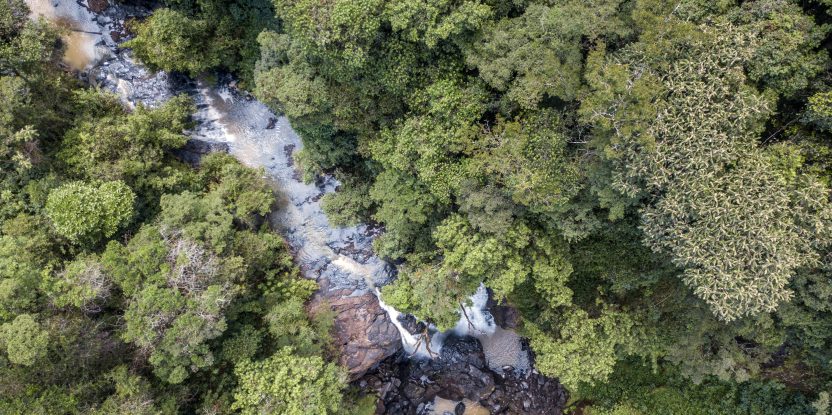Discussing Africa’s responses to climate challenges took centre stage at the Twelfth Conference on Climate Change and Development in Africa (CCDA 12). Held from August 30 to September 2, 2024, in Abidjan, Côte d’Ivoire, under the theme “Financing Climate Adaptation and Resilience in Africa,” the discussions and recommendations from the conference will inform upcoming global dialogues, including the UNFCCC COP29 in Baku, Azerbaijan, in November 2024. The event brought together — policymakers, researchers, civil society leaders and representatives, youth, women, and indigenous communities.
For the second year, the Center for International Forestry Research and World Agroforestry (CIFOR- ICRAF) partnered with the Stockholm Environment Institute (SEI) to host the Africa Climate Science Symposium. The event aimed to bring to the forefront the emerging science related to climate change in Africa. As part of the symposium, Session 23 hosted by CIFOR-ICRAF and moderated by Director for Africa, Peter Minang, explored the contribution of agroforestry and bioeconomy in promoting climate resilience in Africa, highlighting the organization’s work across and beyond the continent.
Agroforestry and bioeconomy: A pathway to resilience
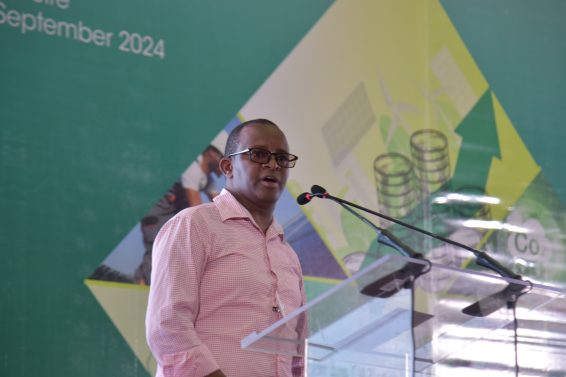
Kennedy Muthee delivering his keynote speech during Session 23 on “Agroforestry-based Bioeconomy in Africa.” Photo by Gilberte Koffi/CIFOR-ICRAF
Agroforestry, the practice of integrating trees into agricultural landscapes, has emerged as a key solution for addressing climate change, ecosystem degradation and livelihood resilience. This sustainable approach is increasingly featured in many African nations’ National Adaptation Plans and Nationally Determined Contributions. Plus, agroforestry directly impacts the livelihoods of 200 million people across 26 African countries, making it a cornerstone of Africa’s socio-economic resilience.
“Nearly 50% of global GDP is tied to nature, underscoring the urgent need to incorporate environmental sustainability into economic growth models,” said Kennedy Muthee, CIFOR-ICRAF research associate, in his keynote address.“Agroforestry-based bioeconomy has the potential to, among others, reduce greenhouse gas emissions, increase biodiversity and ecosystem-services regeneration, create green jobs, improve food and feed security, and transition from fossil fuels to renewable energy,” he noted.
A highlight of the session was the presentation of the Adaptation Benefit Mechanism (ABM) pilot project, funded by the African Development Bank (AfDB). The ABM is an innovative framework designed to mobilize both public and private finance for climate resilience and adaptation. Implemented by CIFOR-ICRAF in Côte d’Ivoire, the first demonstration project under the pilot phase of ABM was implemented by the CIFOR-ICRAF office in Côte d’Ivoire, under the Cocoa Livelihoods Resilience Initiative. This project aims to enhance the resilience of over 400 smallholder cocoa farmers in the Soubré and Vavoua regions by integrating agroforestry systems into their cocoa farms. Through this approach, farmers are better equipped to adapt to climate change’s impacts while improving their economic outcomes.
The session also highlighted the Green Tree Commodities Initiative, a transformative partnership that aims to catalyze green growth in Africa through tree commodities. It was established that over 100 million hectares of the continents’ arable land are dedicated to these commodities, directly involving over 150 small-scale farmers, impacting over 600 million livelihoods and contributing to over 15% of the continent’s GDP.
Yet, the sector potential remains underexploited, with none of the commodities capturing a dominant market share, mainly due to low-value additions. This highlights the need for increased investment to promote the development of tree commodities, fostering resilient and profitable agroforestry-based economic growth across the continent.
Overcoming barriers
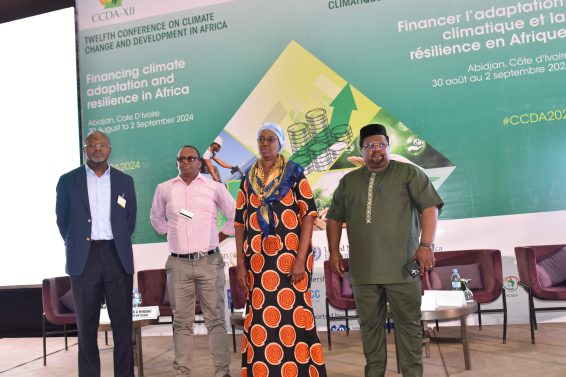
Session 23 Panelists – Augustine Njamshi, Alice Kaudia, Peter Minang, Kennedy Muthee. Photo by Gilberte Koffi/CIFOR-ICRAF
Despite the promising potential of agroforestry and bioeconomy, significant challenges remain. “Persistent fragmentation between scientists and policymakers obstructs effective climate action,” said Alice Kaudia, an associate scientist at the SEI. “The lack of communication and collaboration hinders the implementation of evidence-based policies, particularly at the continental level.”
Reflecting on the broader context, Augustine Njamshi, Chair of Political and Technical Affairs at the Pan African Climate Justice Alliance, discussed the historical gap between development and environmental concerns.“Despite decades of international summits—from the 1972 Conference on Human Development to the 1992 Rio Earth Summit— we are still grappling with the divide between economic development and environmental sustainability.”
Njamshi stressed the need for locally-led climate actions tailored to Africa’s specific needs rather than an overreliance on external solutions. He also called for “results-oriented bioeconomy models that address Africa’s unique challenges sustainably.”
Another critical issue raised during the session was Africa’s limited access to global markets. Although the continent is a major producer of raw materials, integrating its products into international value chains remains a challenge. Ghana’s cocoa sector is a prime example of this challenge, where local producers struggle to meet global standards. There is an urgent need to standardize African products to comply with international markets’ ecological and sustainability demands.
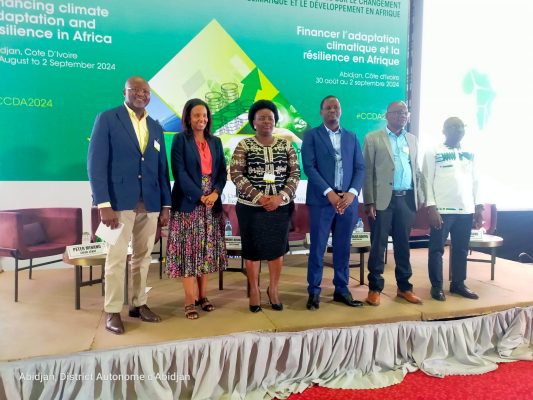
Panelists during the opening plenary for Africa Climate Science Symposium. Photo by the United Nations Economic Commission for Africa (UNECA) | Flickr
The discussions emphasized the importance of scientific evidence in guiding climate actions and policies. Practices such as agroforestry, forest management, and soil carbon enhancement are supported by high confidence levels in IPCC reports and should be prioritized in climate-driven investments. Given the scale of land commitments and the reliance of much of Africa’s population on agriculture, there is also a pressing need to reprioritize agriculture, forestry, and land use in climate policy.
Foresight studies are essential to better understand the synergies and trade-offs of various climate actions, ensuring that Africa’s priorities are represented in global negotiations. Furthermore, value addition to Africa’s tree commodities is critical for green industrialization, delivering significant adaptation and mitigation benefits.
Improved collaboration between scientists and policymakers ensures that climate actions are evidence-based and responsive to Africa’s needs.
Unlocking Africa’s bioeconomic potential
The discussions highlighted Africa’s vast bioeconomic potential. Agroforestry and other sustainable practices can be powerful drivers of both environmental protection and economic growth.
James Kinyangi of the AfDB shared insights on successful agroforestry and nature-based solutions in transforming landscapes, such as the Miombo woodlands in Southern Africa and the Yangambi landscapes in the Congo Basin. However, he stressed the need to “scale these interventions to reach more communities and landscapes” and “improve the documentation and dissemination of their impacts.”
“By embedding these practices in national policies, African nations can build resilient ecosystems while generating livelihoods for millions,” said Muthee. However, success depends on inclusive participation from local communities, women, and youth. Experts highlighted the need for thorough market analysis to better position African products in global markets and to tailor solutions to local contexts.
“Looking ahead, agroforestry and the bioeconomy hold transformative potential for Africa—if supported by robust commitments, innovative financing mechanisms, and enhanced cooperation between scientists, policymakers, and local communities,” concluded Muthee. “Africa stands at a pivotal moment where the right strategies can transform climate challenges into opportunities for sustainable growth.”
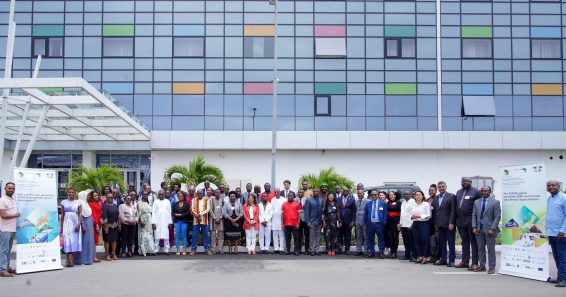
Group photo for participants during the CCDA 12 opening session. Photo by UNECA
We want you to share Forests News content, which is licensed under Creative Commons Attribution-NonCommercial-ShareAlike 4.0 International (CC BY-NC-SA 4.0). This means you are free to redistribute our material for non-commercial purposes. All we ask is that you give Forests News appropriate credit and link to the original Forests News content, indicate if changes were made, and distribute your contributions under the same Creative Commons license. You must notify Forests News if you repost, reprint or reuse our materials by contacting forestsnews@cifor-icraf.org.
